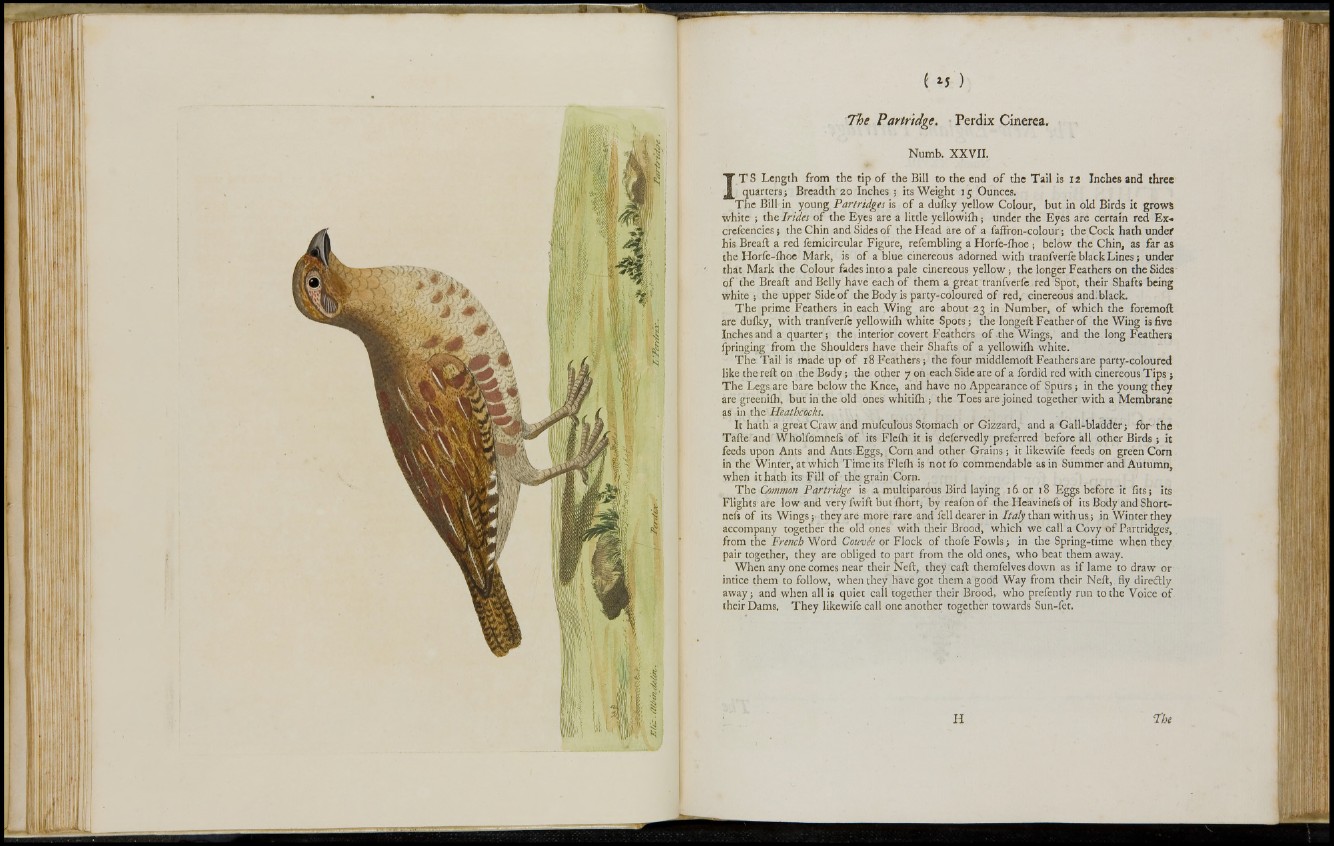
t m )
The Partridge. ■ Perdix Cinérea,
Numb. XXVII.
ÎT S Length from the tip of the Bill to the end of the Tail is 12 Inches and three
quarters; Breadth 20 Inches ; its Weight 15 Ounces.
The Bill in young Partridges is of a dulky yellow Colour, but in old Birds it grows
white ; the Irides of the Eyes are a little yellowiih ; under the Eyes are certain red Ex»
crefcencies ; the Chin and Sides of the Head are of a faffron-colour ; the Cock hath under
his Bread: a red femicircular Figure, refembling a Horfe-ihoe ; below the Chin, as far as
the Horfe-lhoe Mark, is of a blue cinereous adorned with tranfverfe black Lines ; under
that Mark the Colour fades into a pale cinereous yellow; the longer Feathers on the Sides
of the Breaft and Belly have each of them a great tranfverfe red Spot, their Shafts being
white ; the upper Sideof the Body is party-coloured of red, cinereous and:black.
The prime Feathers in each Wing are about 23 in Number, of which the foremoft
are duiky, with tranfverfe yellowiih white Spots ; the longed: Feather of the Wing is five
Inches and a quarter; the interior covert Feathers of the Wings, and the long Feathers
fpringing from the Shoulders have their Shafts of a yellowiih white.
The Tail is made up of 18 Feathers ; the four middlemoft Feathers are party-coloured
like the reft on the Body ; the other 7 on each Side are of a fordid red with cinereous Tips ;
The Legs are bare below the Knee, and have no Appearance of Spurs ; in the young they
are greeniih, but in the old ones whitiih ; the Toes are joined together with a Membrane
as in the Heathcócks.
It hath a.great Craw and muicul'ous Stomach or Gizzard,1 and a Gall-bladder; fbr the
Tafte and Wholfomnels of its Flcih it is defervedly preferred before all other Birds ; it
feeds upon Ants and Ants;Eggs, Corn and other Grains; it likewife feeds on green Com
in the Winter, at which Time its Fleftl is not io commendable as in Summer and Autumn,
when it hath its Fill o f the grain Corn.
The Common Partridge is a multiparous Bird laying 16 or 18 Eggs before it fits; its
Flights are low and very fwift but ihort, by reafon of the Heavinefs of its Body and Short-
nefs of its Wings y they aré more rare and fell dearer in Italy than with us ; in Winter they
accompany together the old ones with their Brood, which we call a Covy of Partridges,
from the French Word Couvée or Flock of thofe Fowls; in the Spring-time when they
pair together, they are obliged to part from the old ones, who beat them away.
When any one comes near their Neft, they caft themfelves down as if lame to draw or
intice them to follow, when they have got them a good Way from their Neft, fly diretftly
away ; and when all is quiet call together their Brood, who prefently run to the Voice of
their Dams, They likewife call one another together towards Sun-fet.